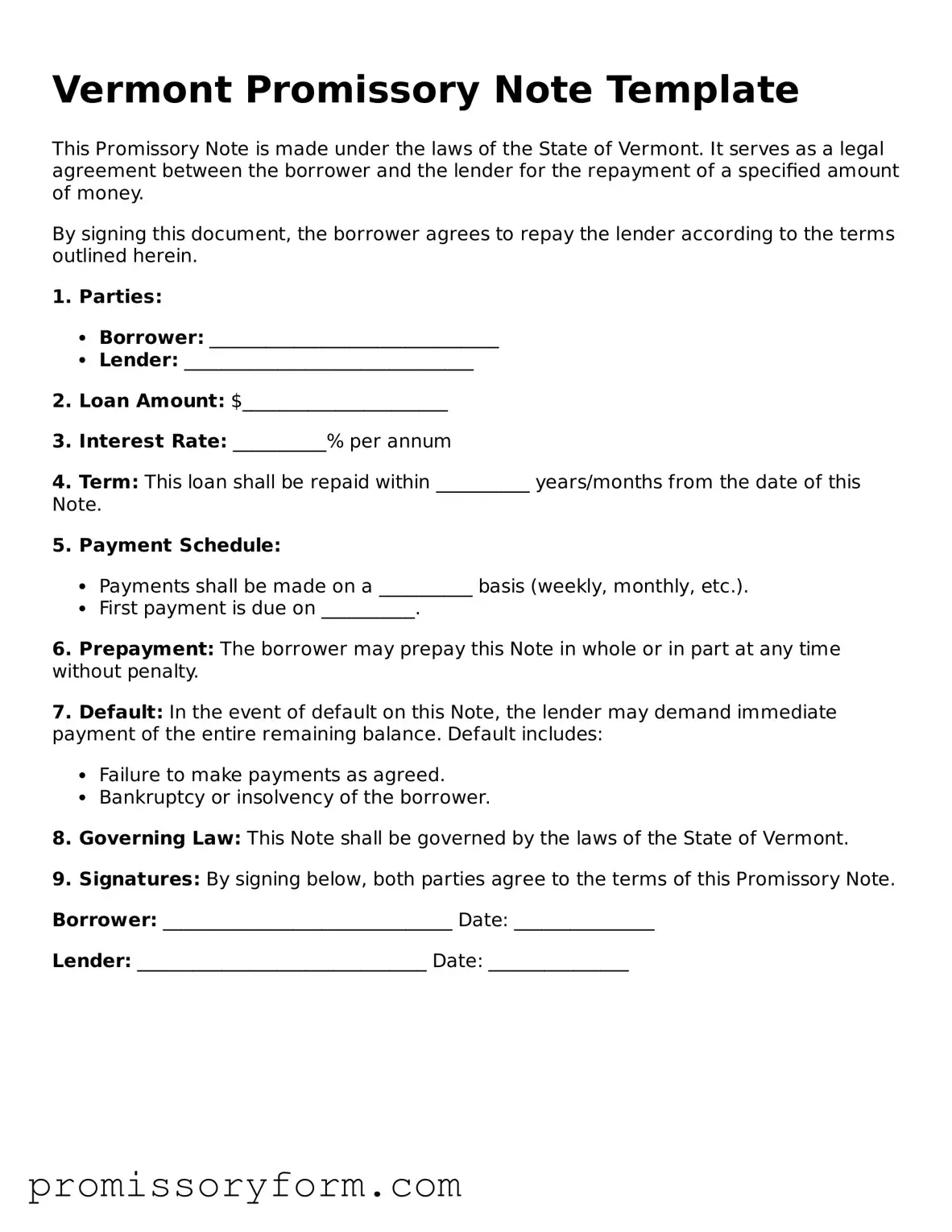Key takeaways
Here are some important points to consider when filling out and using the Vermont Promissory Note form:
- Understand the Purpose: A promissory note is a written promise to pay a specific amount of money to someone at a certain time.
- Identify the Parties: Clearly list the names and addresses of both the borrower and the lender.
- Specify the Loan Amount: Clearly state the total amount of money being borrowed.
- Include Interest Rate: If applicable, mention the interest rate and whether it is fixed or variable.
- Set Payment Terms: Outline how and when the borrower will make payments. Include due dates and payment amounts.
- Define Default Terms: Explain what happens if the borrower fails to make payments on time.
- Include Signatures: Both the borrower and lender must sign the document for it to be legally binding.
- Consider Notarization: Although not always required, having the document notarized can add an extra layer of protection.
- Keep Copies: Both parties should keep a signed copy of the promissory note for their records.
- Consult Legal Advice: If unsure about any terms, it may be wise to consult a legal professional before finalizing the document.
